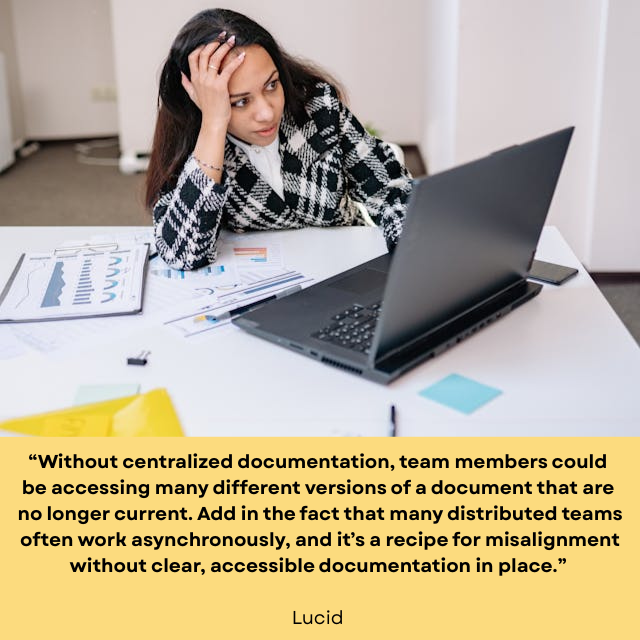- +1 (267) 368-7090
- contact@matcgroup.com
-
53 Knightsbridge Rd,
STE 216
Piscataway, NJ 08854.
If you’ve ever tried to schedule a meeting across four time zones, you know remote work has its quirks. But beyond the logistical headaches, distributed teams face a deeper challenge: cultural cohesion.
When we’re not sharing an office (or even a continent), how do we share a sense of, “This is how we do things here”? The answer isn’t pizza parties or awkward icebreakers on Zoom. It’s documentation.
Not the dry, dusty kind that is locked in a forgotten SharePoint folder, but dynamic, clear, accessible knowledge systems that reflect how your team thinks, works, and grows.
Strong documentation doesn’t just tell people what to do. It tells them who you are as a team.

Keeping Teams Aligned Across Time Zones
When people are logging in across oceans and odd hours, documentation becomes the common thread. Think of it as your team’s shared time capsule, but constantly updated and with fewer cryptic hieroglyphs.
If your docs only get updated when Mercury’s in retrograde, you’re doing it wrong. Keep knowledge alive:

Documentation is often the first place a new hire encounters your culture, and the most enduring way to preserve it. A team handbook full of warmth, clarity, and humor sets a different tone than one that reads like it was ghostwritten by HAL 9000.
So don’t underestimate your docs. They’re not just guides — they’re anchors. They tether your team to a shared reality, no matter how many time zones or languages stand between you.
Resilience in the Workplace: How Knowledge Management can Help Organizations Adapt to Uncertainty
How Documentation and Training Helped the Rebels Blow up the Death Star
Preparing for Business Disruptions: BCPs, DRPs, and BCDRs
“4 reasons modern organizations need internal documentation.” Lucid. Accessed 7/10/25. https://lucid.co/blog/reasons-organizations-need-internal-documentation
“HAL 9000.” Robot Hall of Fame. Accessed 7/25/25. http://www.robothalloffame.org/inductees/03inductees/hal.html
Lau, Yolanda. “Remote Work: Creating A Documentation-First Culture.” Forbes. 6/23/21. Accessed 7/10/25. https://www.forbes.com/councils/forbeshumanresourcescouncil/2021/06/23/remote-work-creating-a-documentation-first-culture
Rigby, Amy. “12 Actually Not Awkward Virtual Ice Breakers for Remote Meetings.” Krisp. 4/23/24. Accessed 7/25/25. https://krisp.ai/blog/virtual-icebreakers